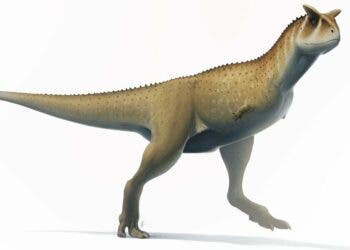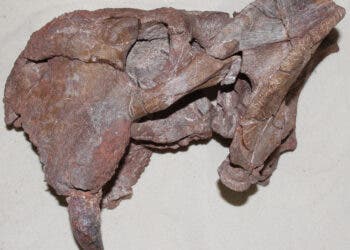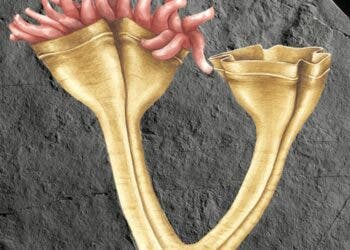The Xinjiang region of northwestern China has yielded the fossils of a newly-identified extinct relative of the giraffe. Unlike the modern ones, these animals were short, stumpy, and had a reinforced ‘helmet’ they used for fighting.

Some 17 million years ago, males of this species would meet their rivals in headbutting matches across today’s China. They sported thick and stumpy necks to absorb the impact, and a bony disk-shaped shield protected their skulls from the impact. These disks were covered in a layer of keratin, the material that makes up our hair and nails, the same structure seen in the horns of modern headbutting animals. And it was all for a good cause: males would bash each other in order to win mating rights with females. Such behavior is seen in modern male giraffes as well.
Hardheads
The authors that described the new species, christened Discokeryx xiezhi, say that it showcases how intense male competition for mates can help drive evolution. In the case of D. xiezhi, it led to the development of thicker necks and their in-built helmets. In modern giraffes, this produced longer necks and led to the emergence of ossicones, the bony projections on the top of their heads.
This newly-described species was unearthed in the Junggar Basin, a large sediment-filled depression in the Xinjiang region of northwestern China, in the form of several specimens. One of them had a completely-intact braincase and the first four vertebrae. These four, known as the cervical vertebrae, were surprisingly robust — which would be consistent with animals that employ headbutting attacks.
“[Each bone] is very robust, very thick, in terms of the cross-section, so it can take this kind of impact,” said study author Jin Meng, a vertebrate paleontologist and the curator-in-charge of fossil mammals at the American Museum of Natural History, for Live Science.
Two other specimens had well-preserved teeth that showed “relatively high” crowns, which would be indicative of a species that primarily ate grasses. Based on the shape of these teeth and analysis of isotopes in their enamel coating, the team is confident that D. xiezhi was an open-land grazer that migrated with the seasons. Based on the specimens’ measurements, the team estimates that D. xiezhi was about the size of a modern sheep, with a neck length proportional to the body, although sturdy.
Analysis of its fossilized bones and teeth suggests that while D. xiezhi was related to today’s giraffes, it is not one of their direct ancestors. This analysis involved a comparison of the bones of living giraffes to these fossils. During this comparison, the team identified 14 different types of head bones in the extended giraffe family, including the ossicones of modern giraffes and the helmets of D. xiezhi, and a wide range of variations in the length and thickness of the animals’ uppermost vertebrae.
Based on this last tidbit, the team says it is likely that other members of the giraffe lineage had evolved their own unique ‘headgear’ and neck sizes to suit their specific combat. This would align with the “necks-for-sex” hypothesis of modern giraffe evolution, which holds that sexual competition, rather than a need to access food, drove the evolution of the animals’ long necks. At one point in giraffes’ history, males with long necks dominated in fights for females, which drove the species to evolve longer and longer necks over time. This theory, introduced in 1996, goes against Darwin’s hypothesis that giraffes evolved long necks in a competition for food.
Right now, the debate is not clear-cut. Most likely both of these factors contributed to the development of modern giraffes with their distinctive necks.
The paper “Sexual selection promotes giraffoid head-neck evolution and ecological adaptation” has been published in the journal Science.






